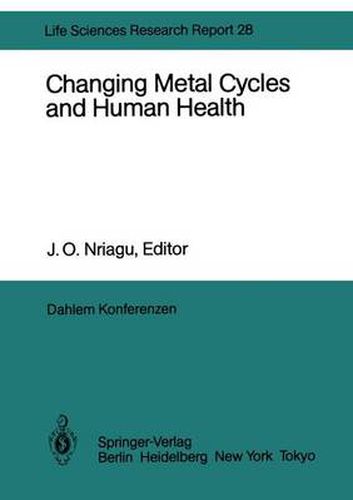Readings Newsletter
Become a Readings Member to make your shopping experience even easier.
Sign in or sign up for free!
You’re not far away from qualifying for FREE standard shipping within Australia
You’ve qualified for FREE standard shipping within Australia
The cart is loading…






This title is printed to order. This book may have been self-published. If so, we cannot guarantee the quality of the content. In the main most books will have gone through the editing process however some may not. We therefore suggest that you be aware of this before ordering this book. If in doubt check either the author or publisher’s details as we are unable to accept any returns unless they are faulty. Please contact us if you have any questions.
of metal interactions with subcellular biochemical systems usually either are metabolites of the system affected (porphyrinurias) or represent some specific function of a cellular system being impaired (proteinurias). One typically finds a continuum of symptoms, from the subtle or so-called no effect bio chemical and physiological indicators of exposure to severe clinical disease and death. This continuum is the basis of much of the controversy since many health officials follow the traditional practice of applying the threshold health-effect concept in evaluating the problems of environmental exposure to metals. The past decade or so, however, has seen a vast increase in our understanding of the effects of elevated concentrations of toxic metals in local populations and ecosystems. At the same time, there is a growing awareness that the effects of the metals which occur naturally in the environment must be distinguished from those imposed by the pollutant fraction. This point was amply document ed in a recent study of cadmium intake and cadmium in a number of human tissues in Sweden, Japan, and the United States, which showed fairly conclu sively that the background exposure in Japan was about threefold higher than in the other two countries (2). One immediate implication is that any health ef fect studies of cadmium in Japan using control groups within that country are liable to underestimate the difference between the exposed and the control groups simply because of the the high background intake.
$9.00 standard shipping within Australia
FREE standard shipping within Australia for orders over $100.00
Express & International shipping calculated at checkout
Stock availability can be subject to change without notice. We recommend calling the shop or contacting our online team to check availability of low stock items. Please see our Shopping Online page for more details.
This title is printed to order. This book may have been self-published. If so, we cannot guarantee the quality of the content. In the main most books will have gone through the editing process however some may not. We therefore suggest that you be aware of this before ordering this book. If in doubt check either the author or publisher’s details as we are unable to accept any returns unless they are faulty. Please contact us if you have any questions.
of metal interactions with subcellular biochemical systems usually either are metabolites of the system affected (porphyrinurias) or represent some specific function of a cellular system being impaired (proteinurias). One typically finds a continuum of symptoms, from the subtle or so-called no effect bio chemical and physiological indicators of exposure to severe clinical disease and death. This continuum is the basis of much of the controversy since many health officials follow the traditional practice of applying the threshold health-effect concept in evaluating the problems of environmental exposure to metals. The past decade or so, however, has seen a vast increase in our understanding of the effects of elevated concentrations of toxic metals in local populations and ecosystems. At the same time, there is a growing awareness that the effects of the metals which occur naturally in the environment must be distinguished from those imposed by the pollutant fraction. This point was amply document ed in a recent study of cadmium intake and cadmium in a number of human tissues in Sweden, Japan, and the United States, which showed fairly conclu sively that the background exposure in Japan was about threefold higher than in the other two countries (2). One immediate implication is that any health ef fect studies of cadmium in Japan using control groups within that country are liable to underestimate the difference between the exposed and the control groups simply because of the the high background intake.